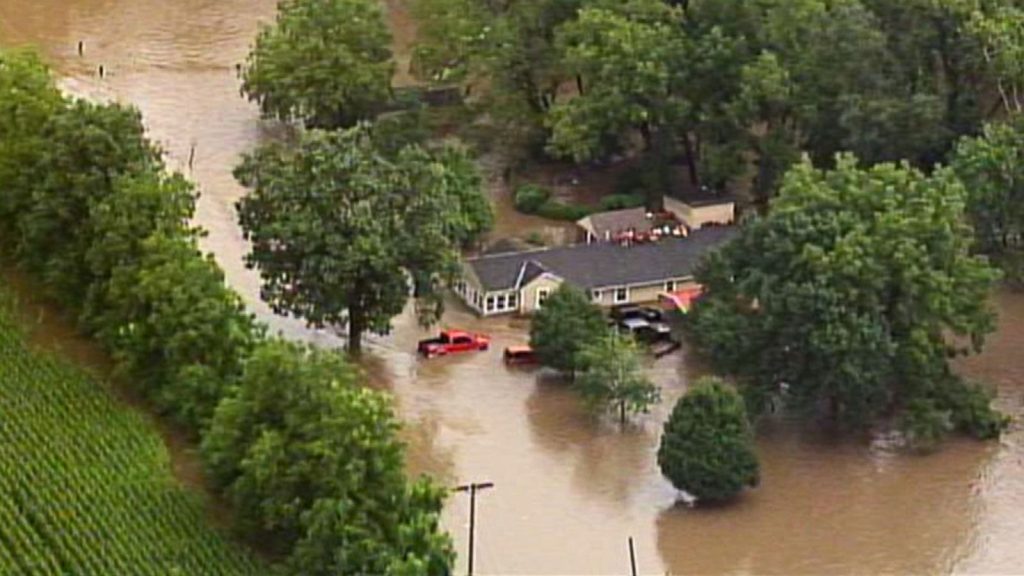Unprecedented Storms Unleash Heavy Rains, Flash Flooding, and Water Rescues Across Kansas City Metro

The Kansas City metropolitan area recently experienced a series of severe storms that brought heavy rains, flash flooding, and necessitated multiple water rescues. The intensity and rapid onset of these storms caught many residents off guard, leading to widespread disruption and emergency responses. This article delves into the events that transpired, the impact on various communities, and the ongoing efforts to mitigate future risks associated with extreme weather in the region.
Overview of the Storms
The recent storms that hit the Kansas City metro area were characterized by intense and prolonged rainfall, leading to significant flash flooding. Meteorologists had predicted the possibility of severe weather, but the sheer volume of rain and the speed at which it fell overwhelmed the region. Overland Park weather reports indicated that some areas received several inches of rain within a short span, exacerbating the risk of flash flooding.
These storms were part of a larger weather system that swept across the Midwest, bringing heavy rains to multiple states. The National Weather Service issued numerous warnings and advisories as the system approached, highlighting the potential for hazardous conditions. Despite these warnings, the rapid accumulation of water in low-lying areas and urban centers like Kansas City and Overland Park led to unexpected and dangerous situations.
Local authorities were quickly mobilized to respond to the flooding, deploying resources to the most affected areas. Emergency services, including fire departments and rescue teams, were on high alert to assist residents trapped by rising waters. The response efforts were crucial in mitigating the impact of the storms and ensuring the safety of the community.
Impact on Residential Areas
The heavy rains and subsequent flash flooding had a profound impact on residential areas throughout the Kansas City metro. Many homes, particularly those in low-lying areas, experienced significant water damage. Basements and ground floors were inundated, leading to the loss of personal property and structural damage to buildings.
In neighborhoods like Overland Park, the water levels rose rapidly, catching many residents unprepared. The local weather Kansas updates had warned of potential flooding, but the severity was greater than anticipated. Homeowners struggled to protect their properties, using sandbags and other temporary measures to try and stave off the floodwaters.
Insurance claims skyrocketed as residents sought compensation for the damages incurred. The financial burden of repairing flood-damaged homes is substantial, and many families are now facing prolonged recovery periods. Community support and aid from local organizations have been instrumental in providing immediate relief and long-term assistance to those affected.
Infrastructure and Transportation Disruptions
The storms also caused significant disruptions to infrastructure and transportation networks within the Kansas City metro area. Roads and highways were submerged, leading to closures and traffic delays. The flash flooding created hazardous driving conditions, and several vehicles were stranded or damaged by the rising waters.
Public transportation services were equally affected, with bus routes and train services experiencing delays and cancellations. Commuters were left scrambling to find alternative routes as the flooding rendered many usual pathways impassable. The disruption extended to major commercial areas, affecting businesses and economic activities.
Efforts to restore normalcy were swift but challenging, as the extent of the damage required substantial repairs and cleanup operations. City officials worked around the clock to reopen roads and ensure the safety of the transportation infrastructure. The impact on daily life was significant, highlighting the vulnerability of urban infrastructure to extreme weather events.
Emergency Responses and Water Rescues
Emergency services played a critical role in managing the crisis caused by the heavy rains and flash flooding. Fire departments, police, and specialized rescue teams were deployed across the Kansas City metro to assist those in immediate danger. Numerous water rescues were conducted, with first responders braving the hazardous conditions to reach stranded individuals.
In Overland Park, emergency personnel were particularly busy, responding to numerous calls for assistance. The rapid response was crucial in preventing loss of life and ensuring the safety of residents. Many rescues involved using boats and other equipment to navigate flooded streets and reach those trapped in their homes or vehicles.
Coordination between different emergency services and local government agencies was essential in managing the crisis. The effectiveness of these coordinated efforts showcased the preparedness and resilience of the Kansas City metro area in the face of natural disasters. However, it also underscored the need for ongoing training and resources to handle such events more efficiently in the future.
Community and Government Initiatives
In the wake of the storms, both community groups and government agencies have taken steps to support recovery and improve future resilience. Local organizations have been instrumental in providing immediate relief, such as food, shelter, and financial assistance to affected families. Fundraising efforts and donation drives have garnered widespread support from residents.
Government initiatives have focused on assessing the damage and planning long-term recovery strategies. Officials have been working on improving flood management infrastructure, including enhancing drainage systems and reinforcing flood barriers. These measures are aimed at reducing the impact of future storms and protecting vulnerable areas from severe weather.
Additionally, public awareness campaigns have been launched to educate residents on how to prepare for and respond to flash flooding. These initiatives emphasize the importance of staying informed about weather Kansas updates and taking proactive measures to safeguard homes and families. The collective efforts of the community and government highlight the resilience and solidarity of the Kansas City metro area in the face of adversity.
Long-term Implications and Future Preparedness
The recent storms have highlighted the urgent need for improved preparedness and resilience against extreme weather events in the Kansas City metro area. Climate experts have warned that such incidents may become more frequent and severe due to climate change. As a result, there is a growing emphasis on developing comprehensive strategies to mitigate the risks associated with flash flooding and other weather-related disasters.
Urban planning and infrastructure development are key areas of focus for future preparedness. Enhancing stormwater management systems, implementing green infrastructure solutions, and updating building codes to account for flood risks are essential steps. These measures aim to reduce the vulnerability of the urban environment and ensure sustainable development in the face of changing weather patterns.
Community engagement and education also play a critical role in long-term preparedness. Empowering residents with the knowledge and resources to respond effectively to extreme weather can significantly reduce the impact of such events. Ongoing collaboration between government agencies, community groups, and residents is crucial in building a resilient and adaptive Kansas City metro area that can withstand future storms and flash flooding events.
Conclusion
The recent storms and subsequent flash flooding in the Kansas City metro area have underscored the importance of preparedness, community resilience, and effective emergency response. While the immediate impact was significant, the coordinated efforts of emergency services, government agencies, and community organizations played a crucial role in managing the crisis and supporting recovery. Moving forward, it is essential to continue investing in infrastructure improvements, public awareness, and climate resilience to protect the region from future extreme weather events. The Kansas City metro’s experience serves as a stark reminder of the power of nature and the need for collective action in the face of such challenges.





